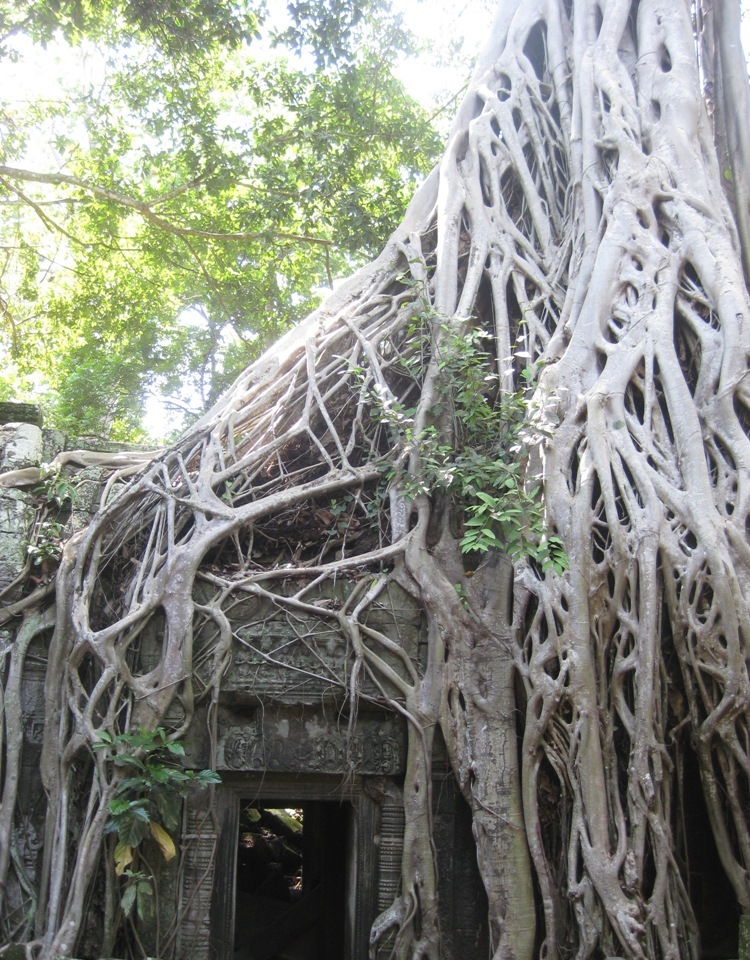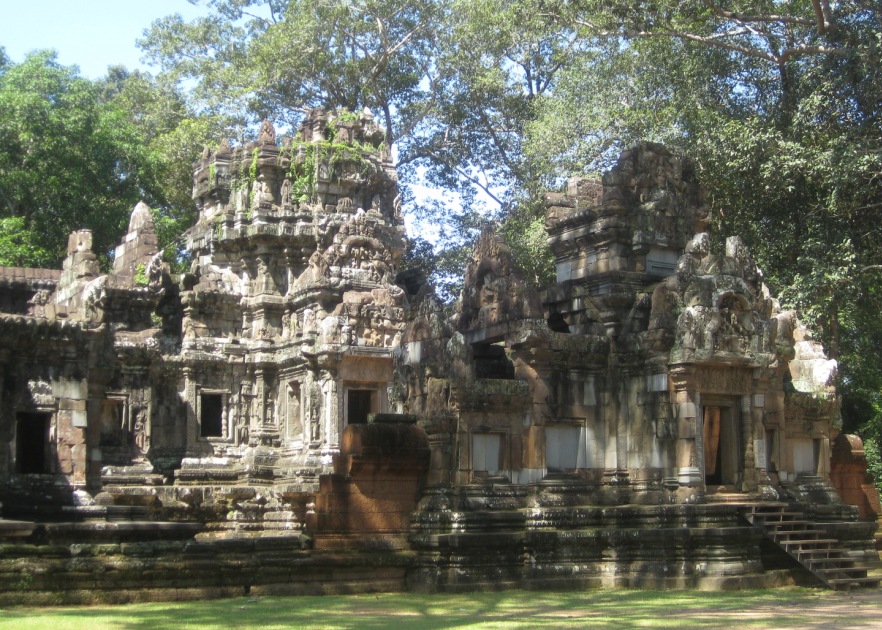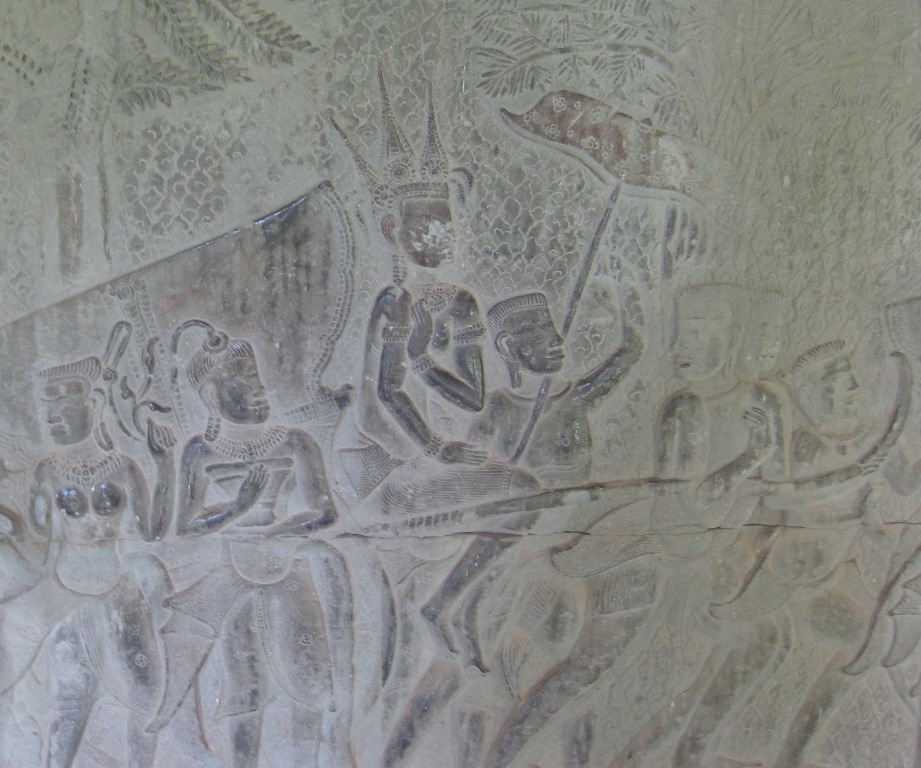In my next blog about Voice of a Voyage, I write more about Carl Safina and the issue of Japan’s illegal whale hunting. While we were in Japan, I saw restaurant menus (occasionally there were some with English translations) advertising whale meat. As with China and their shark fin soup, Japan’s extensive use of illegal and ill-gotten food items is blatant. Unlike Japan, however, there is a movement that started in Hong Kong to abstain from shark fin soup.
But right now I am back in Cambodia, which I loved the first time I was here and I continue to enjoy the people and the place. It is, of course, hot and humid, and Siem Reap, which was a rather quiet little town that served merely as a launch pad for tourists visiting Angkor Wat when I was first here some years ago, is now a bustling city. I wrote in Voice of a Voyage:
In Siem Reap, where we had gone primarily to see Angkor Wat, I found many handicraft shops employing widows and orphans, disabled landmine survivors, street children, and others needing a safety net in a country with none. Such shops were among the various projects of the multitude of NGOs (nongovernmental organizations) in Cambodia. I followed the directions I had been given down a curving dusty street to such a shop. There I bought my Christmas presents for that year, much to the delight of the smiling young widow and mother, whose child wearing only a small torn T-shirt played quietly in the dirt nearby.
Today it is difficult to find those shops. They have been replaced with bars (there is even a Pub Street), hotels, and restaurants. My understanding is that the taxes have increased, thus it is more difficult for these shops that provide a much-needed social net to remain. There are still many “training establishments,” both restaurants and hotels that teach disadvantaged youth and women marketable skills. I lucked out with our hotel, Soria Moria, started in 2007 by a Norwegian couple concerned with sustainable tourism development. In 2011, the local employees were made partners and majority owners. They continue to have a cooperative training arrangement with Norway and provide training positions for local disadvantaged youths, paying them an hourly rate based on the equivalent of the fulltime position. They also sponsor and advocate locally owned businesses and culturally responsible tourism. They provide insurance and retirement benefits also. The hotel hosts a charming Apsara dance program once a week put on by youth from the Sangkheum Center, an NGO educational center in Siem Reap for disadvantaged children. We also chose to take their ‘village tour” with Sokha, our guide and charming, helpful front desk clerk. It was just Ethan, me, Sokha, and our faithful tuk tuk driver, Vireak, who had been transporting us everywhere not within walking distance.
Because of the upheaval of war, Pol Pot, poverty, and lack of education among the rural poor, Cambodia struggles to provide care for its disadvantaged children—whether orphans, from poor families, rescued from child prostitution, or other problems. Various NGOs (nongovernmental organizations) and local agencies provide programs to help. Our first stop was one of these. This particular one was started by a Cambodian man to help rural poor children. They live in the compound, but if their family homes are nearby, they stay with their families, but they have meals, school, and work at the compound. Their crafts help support the center. They do silk weaving and make shadow puppets and cutout decorations like shadow puppets from cow hide. This is a photo of Ethan with the boy who made the elephant shadow puppet that I bought.

We also walked through a local market (much like the ones where I used to provision for Bali Ha’I and wrote about in Voice of a Voyage also) sampling various items including dried banana chips and a pastry with sweet bean inside. The market is a busy, social place. If someone is not known to the vendor, they will greet a young lady as “What you want, beautiful girl?”or a young man, “Handsome man, how much you want?” Older women are aunties, and older men, uncle or father. Ethan was frequently called “Handsome boy,” because his skin is so white. Sokha told us how her young brother who lived in the country asked her once when she was visiting when she would bring back the people from heaven. When she questioned him, it turned out he meant the Caucasian people she had brought over once. Because of their pale skin, he considered them from heaven! The following two photos are of the market and the sweets we were tempted by.
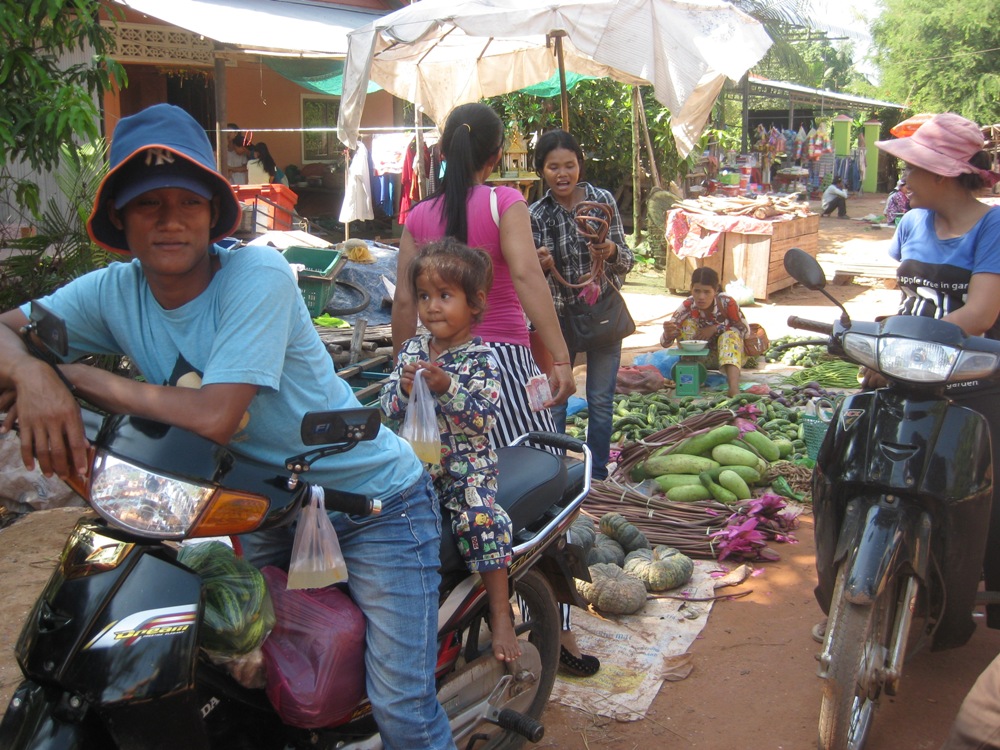
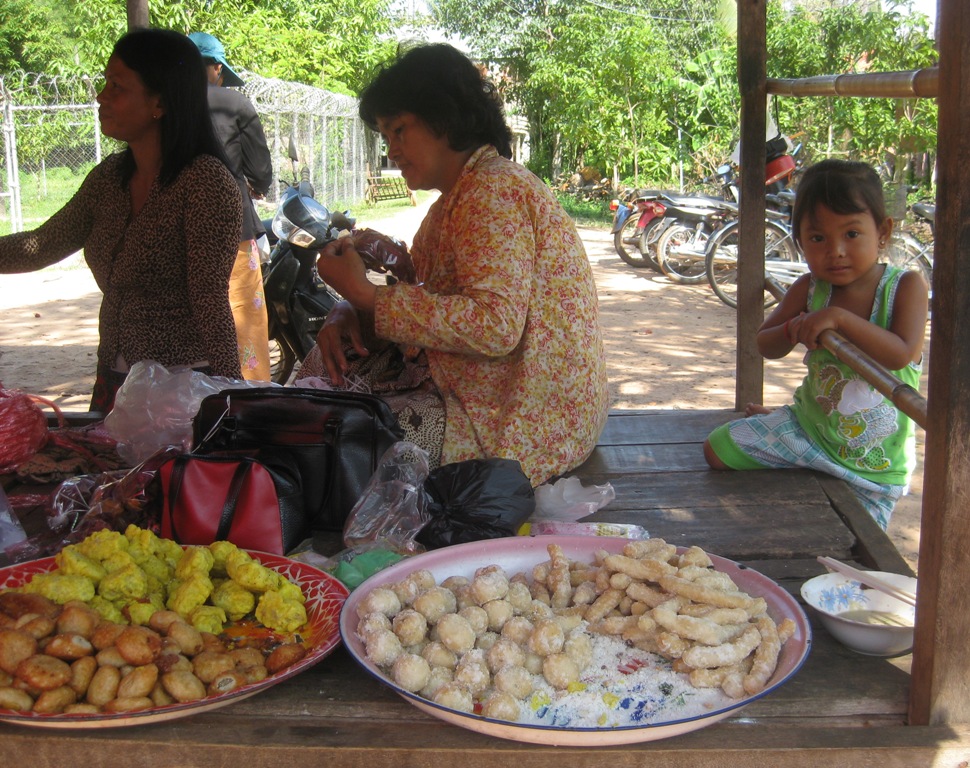
We stopped by a local elementary school and met with the students and left a bag full of pens and colored markers I had brought for them, then went on to Sokha’s grandmother’s traditional house, rice paddies, and garden, where Sokha’s mute cousin, Chen, lives now. He was quite pleased to be given a pair of Ethan’s sneakers and some other items we had brought for him. Chen’s reward to us was to climb a coconut palm and get us a green coconut to drink from and for me to scoop out the creamy coconut custard that I love. First a photo of the school class we visited, then Sokha, Chen, and Ethan with the new shoes, followed by Chen up the tree!
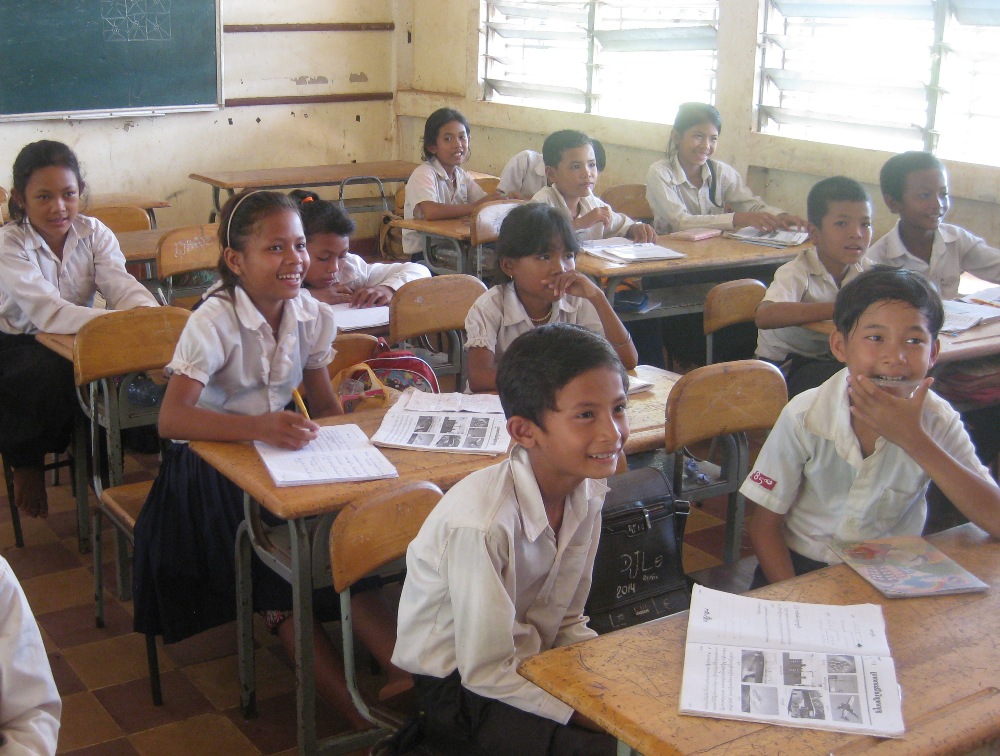
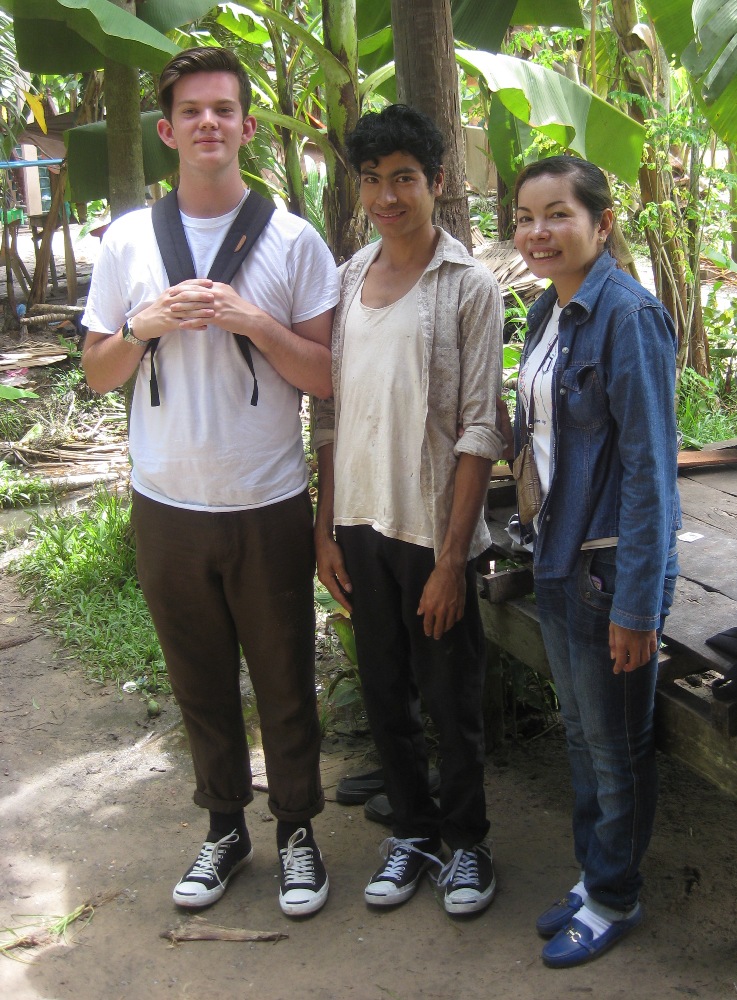

Houses are built up on stilts because in the past snakes, wild elephants, and tigers were a problem, and in certain areas, the rivers flooding. The domestic animals were kept below at night. The cattle are used for work to pull carts or plow the fields. Every family will have a plot of land for growing vegetables and some rice paddies. Bananas, coconuts, and papaya grow naturally in the treed areas around the houses. Cooking is done over a small wood or charcoal fire usually below the house. Often there will be a separate small shed for storing rice. The first photo is how Chen was cooking his lunch of small fish and rice; the second of typical rural homes.
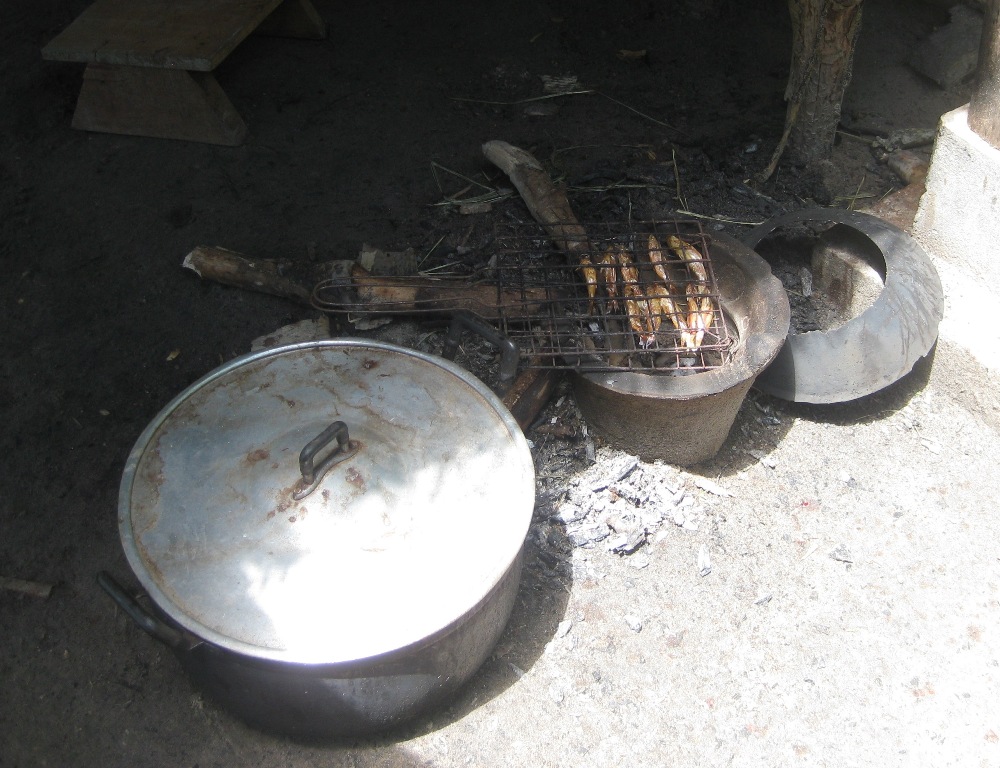
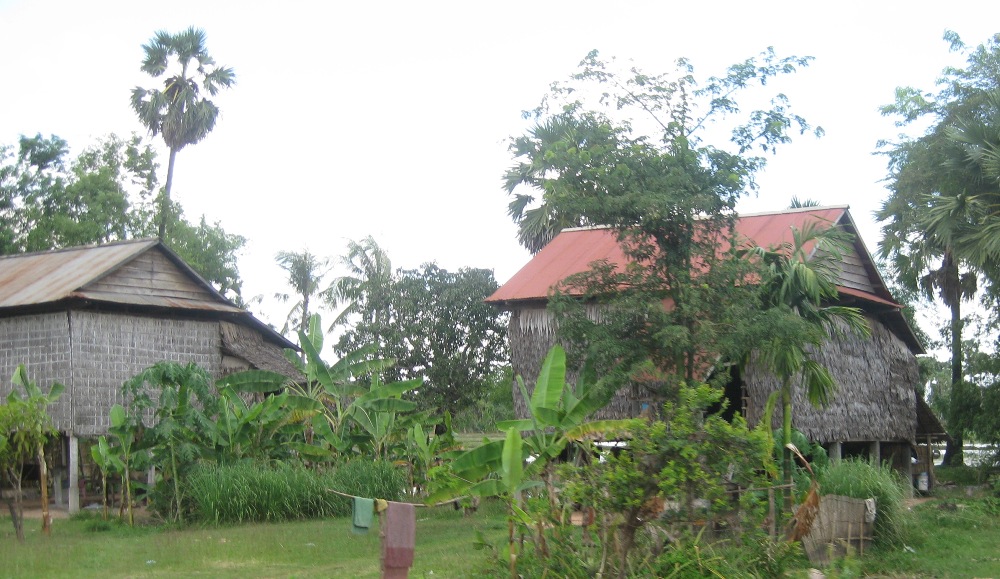
Sokha explained that how well a family manages is often dependent on the wife and how she manages money. Is she a wise shopper, good gardener, and does she save for school money for the children, and to buy a house? Too often, the men spend the money on drink. In the rural areas, where education was not a priority in the past, parents do not understand how important it is for children—both boys and girls—to go to school. During the Pol Pot era, the educated were often massacred; many still remember.
Sokha also treated us to a typical Khmer lunch by the river and then to a Buddhist temple and pagoda, where we were prayed over by a chanting monk and then could ask him questions, which Sokha translated back and forth. Among other things he emphasized to us that Buddhists do not proselytize. They believe what they believe but don’t feel that it is proper to insist to others that Buddhism is the only way. He also told us how the temple is open to everyone, and that there are educational classes there to learn English, for example, that are open to all. The color saffron of the monks’ robes is considered to be a calming, intermediate color—neither too bright nor too pale. Here is a photo of “our” monk.
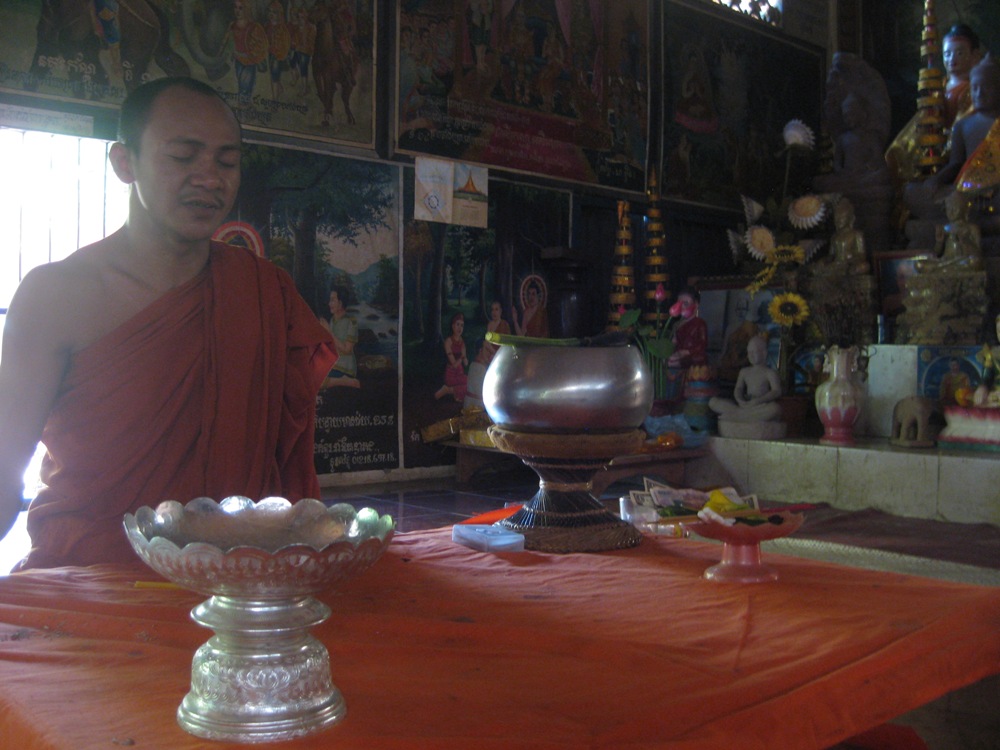
It was a fascinating day and enabled us to understand better the story of Cambodia. But Angkor Wat is still an important part of the fabric of this culture, not only for the classic views, but the detail of the bas reliefs and decorations on the various temples and buildings. There is a photo in Voice of a Voyage of this same tree and its choking hold on the entrance to this part of the temple, so I had to take it again. Following that is one of the classic wats and then a small sample of detail from one of the temples.
